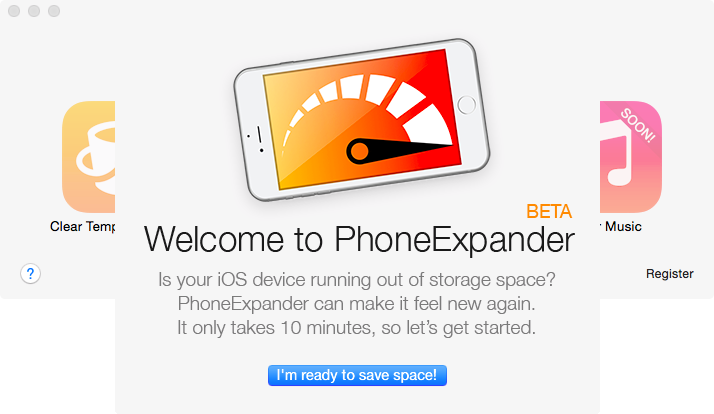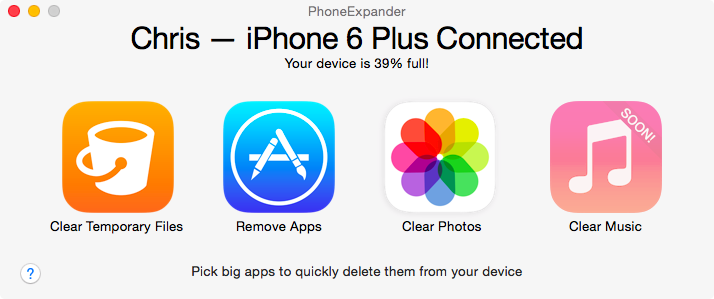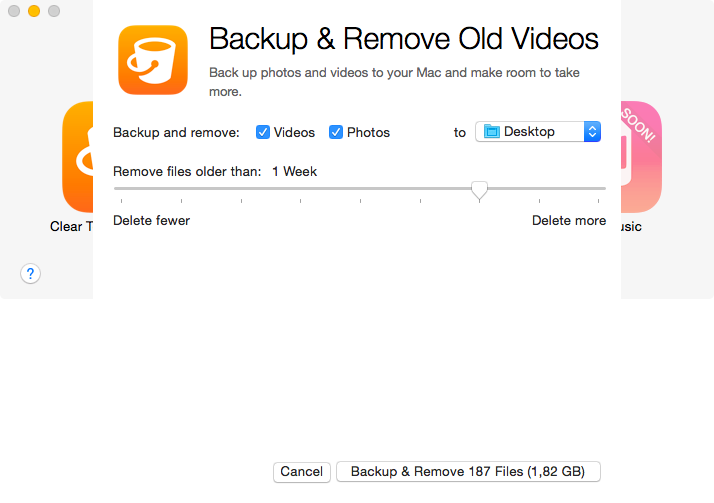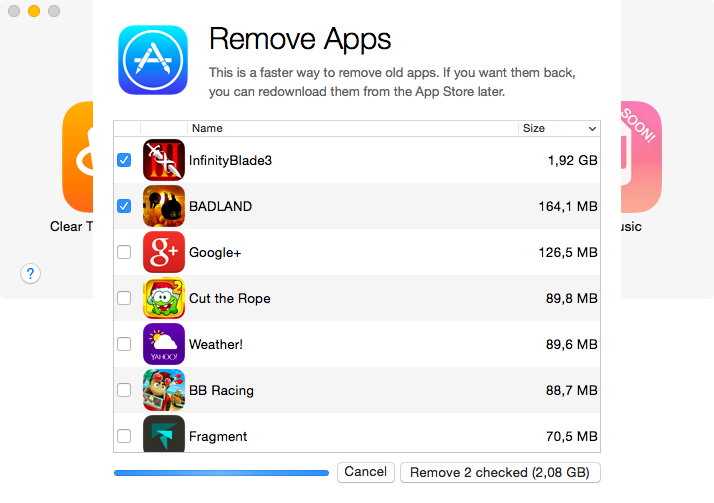If your iPhone or iPad is running out of space, manually removing unwanted photos, videos, songs, apps and stuff like Safari’s Reading List is a good way of freeing up some store space. But more often than not, this isn’t enough.
The devil, as they say, is in the detail — in this case, the mysterious ‘Other’ category that iTunes displays after connecting your iOS device to a computer.
‘Other’ storage is a section iOS uses to store temporary data, cache files inside apps and items retrieved through the iOS Background Refresh feature to make apps load faster. ‘Other’ storage balloons over time and can quickly add up to anywhere between a few hundred megabytes to a couple gigabytes of wasted on-device storage.
Aside from performing a clean install of iOS or restoring your device as new, there’s no easy way of manually reclaiming your ‘Other’ storage. But thanks to a brilliant new Mac app in town, created by Nice Mohawk, anyone — even novice users — can free up storage space on their iPhone and iPad in minutes. Not only does the app let you reclaim your ‘Other’ storage, but also delete caches, back up your photos and videos, as well as remove large apps and music.
“Our focus was as much about educating the user on what is taking up the most space on their devices and then helping them empty those out quickly,” said Joshua Keay from Magnetism Studios, a company that helped make the app
As you can see below, Phone Expander is pretty straightforward.
Upon firing up the Mac-only app and connecting your iOS device to a computer via a USB cable, Phone Expander puts up the main menu with the following choices: Clear Temporary Files, Remove Apps, Clear Photos and Clear Music.
Clear Photos
Snapping up a lot of photos and capturing high-definition video is the fastest way of eating up your storage space. This feature lets you free up substantial storage space by backing up old photos and videos to a computer before removing them from the device.
First tick the “Videos” and “Photos” box to tell the app to remove videos and/or photos, respectively. In the “TO” section, choose Desktop or click the drop-down menu to select a new target folder where your media will be transferred.
A slider at the bottom of the interface allows you to select whether Phone Expander should back up fewer or more items. Changing any of the aforementioned settings will cause the app to re-calculate the amount of reclaimed storage space.
Hitting Backup & Restore initiates the process of copying the media files to your computer before deleting them from the iOS device. Don’t forget that you can selectively delete individual photos and videos yourself in the Photos and Videos app.
Remove Apps
Choosing this option scans your iOS device to determine how much storage is consumed by your apps, sorted by size. Just tick the ones you no longer need to instantly see how much storage will be reclaimed.
Hitting Remove deletes the ticked apps from the device.
Don’t worry, you can re-download your apps at any time through the Purchased tab of the App Store iOS app or in desktop iTunes.
Tip: in addition to tapping and holding an app’s Home screen icon, you can quickly remove apps on your iPhone or iPad in Settings > General > Usage.
Clear Temporary Files
This is key to reclaiming the elusive ‘Other’ storage on your iOS device.
All apps create a residue of temporary files so they load faster. That’s all fine and dandy, but the extra files quickly add up and fill storage. It is, however, perfectly fine to delete caches and temporary items without breaking your apps or losing access to your own documents.
Sure, TweetBot may take longer to load because you’ve just cleared cached timelines. Likewise, you may lose offline access to your starred items in Dropbox. Favorited songs in Spotify may need re-caching. Downloaded issues of your favorite magazines in Newsstand may be removed and webpages saved to Safari’s Reading List may no longer be available without an Internet connection.
But none of the above is irreversible: back issues of Newsstand magazines are re-downloadable, your Dropbox files won’t go anywhere, articles are still present in Safari’s Reading List and apps like TweetBot and Safari will rebuild their respective caches as you continue to use them.
“The operating system and the app itself are designed to clear these caches automatically but doesn’t do it aggressively enough, so they pile up,” Keay said.
Again, the key takeaway is that removing caches won’t delete your own documents or custom data created within apps themselves, like game saves and what not.
“User data, preferences and settings are stored in separate databases which are generally backed up via iCloud,” he added.
Clear Music
This feature isn’t ready for prime time yet.
When it launches, you’ll be able to remove individual songs from an iOS device, with a similar method of backing songs up first. In the meantime, users can manually delete songs from their device right inside the iOS Music app, here’s how.
Phone Expander can be downloaded through the official website.
They’re still adding more features so Phone Expander is being provided as a beta. It doesn’t cost a dime to download. Best thing you give it a whirl now because Phone Expander will be a paid app when it launches this Spring, costing about $15 a pop.
A Windows version is not in the works for the time being.




